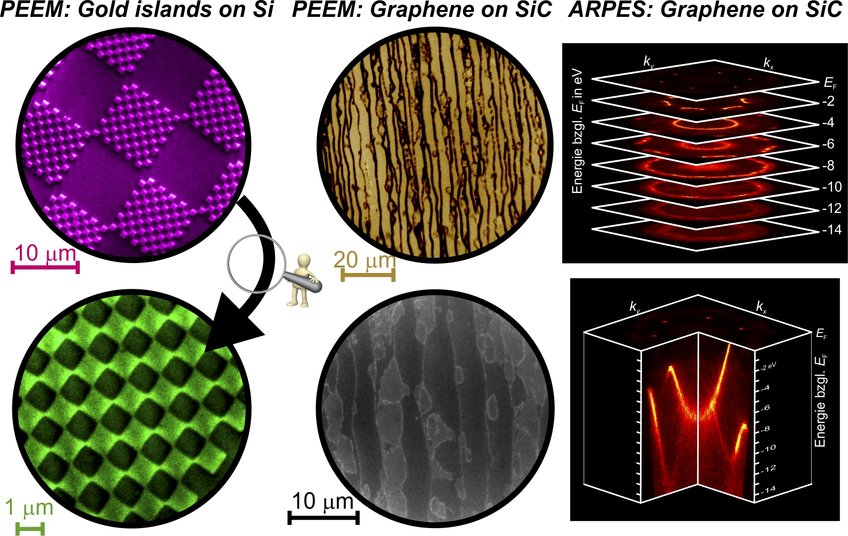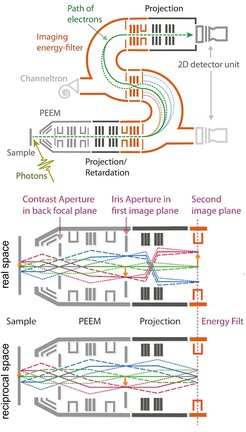
NanoESCA (Electron Spectroscopy for Chemical Analysis)
- Determines quantitatively the chemical composition, the atomic structure, and the electronic structure of surfaces and interfaces on µm and nm scales.
- Lateral resolution in imaging PEEM-mode better than 40 nm.
or imaging XPS: < 1 µm.
for ARPES measurements: < 10 µm.
- Energy Resolution: XPS: <400 meV, UPS: < 50 meV.
- k-space resolution: 0.03 Å-1.
- Sample temperature during measurements adjustable between 40 K and 600 K.
- The ESCA apparatus is equipped with a preparation chamber housing low-energy electron diffraction (LEED), Knudsen cell evaporators, facilities to clean a surface, posibility to transfer samples via UHV with a FerroVac suitcase, making this system extraordinarily flexible and versatile.
- Samples need to be flat and highly conducting for NanoESCA measurements.

The NanoESCA can be operated in three different modes: (i) non-energy filtered photoemission electron microscope (PEEM), (ii) spectroscopy using a channeltron detector, (iii) energy filtered real space imaging and k-space spectroscopy. The first column of the NanoESCA houses an electrostatic PEEM acting as an entrance lens for the aberration compensated imaging double energy analyzer (IDEA), which is a twin hemispherical energy analyzer. The PEEM consists of an immersion objective lens with exchangeable and adjustable contrast apertures, an electrostatic octupole stigmator and two projective lenses. In the first intermediate image plane an adjustable iris allows the selection of a defined field of view for the spectroscopy mode. Either the projection lens projects the first intermediate image onto the screen of the PEEM, or it is used to adapt the energy of the electrons to the pass energy of the analyzer.
A channeltron detector is placed after the first hemisphere, which allows quantitative ESCA analysis. For this, the area of detection can be varied by the adjustable iris to areas as small as 2x10 µm2. The projective lenses after the second hemisphere are used to image the energy filtered electrons onto the second imaging unit.
In order to switch between real space and reciprocal space imaging the projection lens is adjusted to create a telescopic image in the first intermediate image plane where the iris is used to define the field of view for the k-space mapping.
